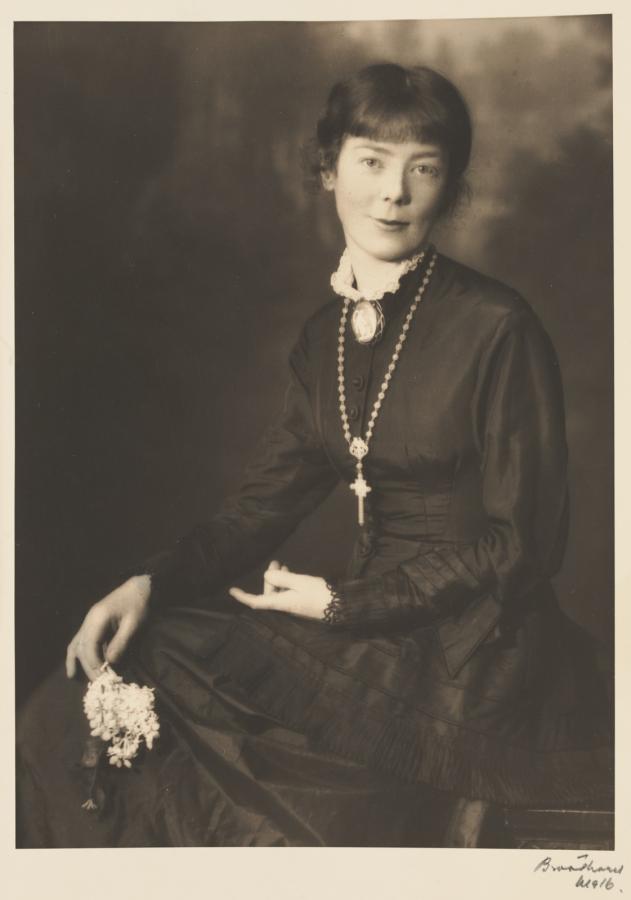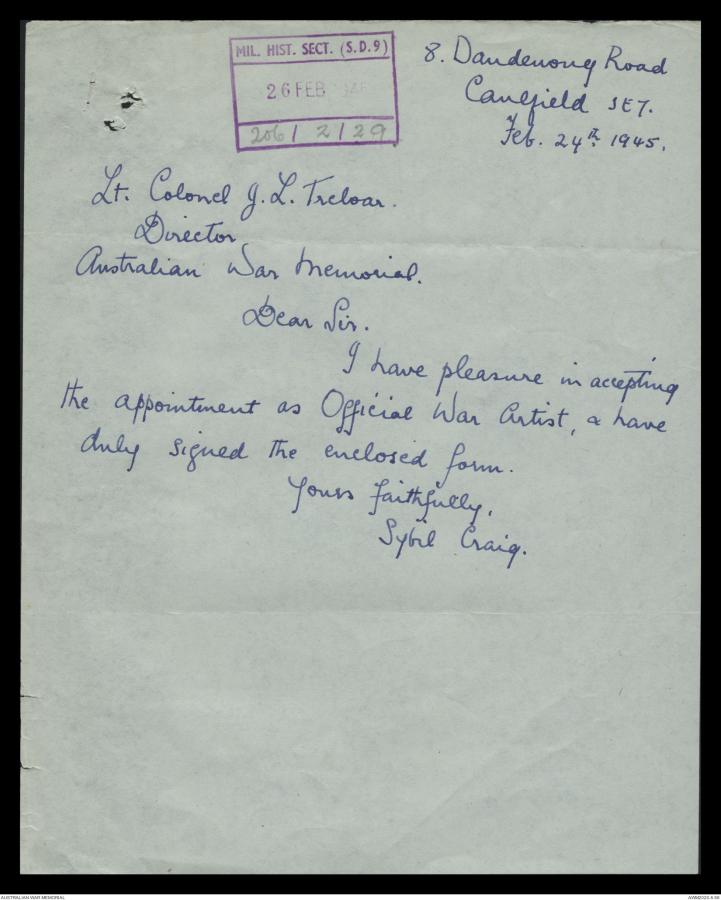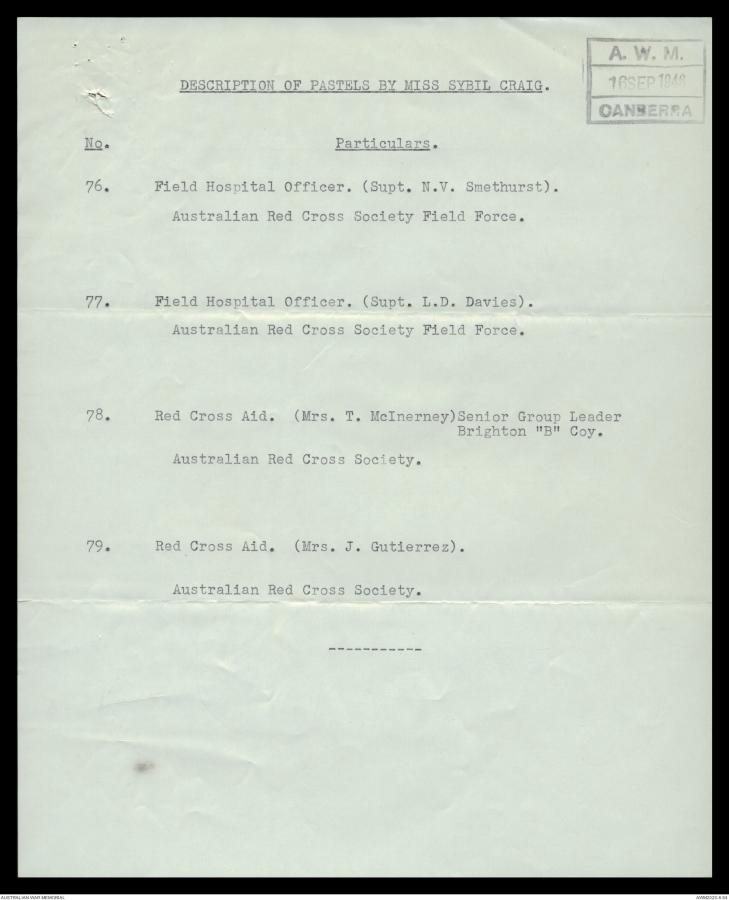The Appointment of Official War Artist Sybil Craig
“SYBIL CRAIG.
Spinster – Age approx. 42 years.
Ability – Good general knowledge. Draws particularly well. Strong in figure work.
Colour sense excellent. Can use both water colour and oil – work highly regarded by good judges.” W.H. Rowell
Sybil Mary Frances Craig started as an Official War Artist on 1 March 1945. The Australian art community was calling for appointments that reflected contemporary artistic trends, and Sybil Craig was among the artists recommended by the Art Committee of the War Memorial for appointment. She was the third and last woman to be appointed as a war artist during the Second World War and was engaged for a period of six months.
The engagement came with a number of conditions, including the rate of pay, set at two guineas per day, nearly twice average weekly earnings for men. Materials were to be provided at the expense of the Australian War Memorial, and Craig was required to “devote” herself “entirely to … duties as official war artist”. The agreement added that drawings, sketches, paintings or other works could be stipulated by an officer nominated by the Director. At the same time, she was given freedom to paint subjects she selected, “provided that they must have some relation to the war now in progress.” At the conclusion of her engagement, she was to deliver all artistic works, equipment and unused materials supplied at the expense of the Commonwealth to the Memorial within seven days. All delivered works were to be accompanied with an “adequate caption giving the date on which and the place where made and a general description of the subject”.
Sybil Craig accepted and signed the offered appointment on 24 February 1945, witnessed by her father, Matthew Francis Craig. Sybil noted, “I have pleasure in accepting the appointment as Official War Artist.”
Her first payments came late. Director John Treloar was not told about this oversight, so in order to meet her likely complaint, he told her that action to arrange her salary had not been taken until 21 March, but that the money would come later. The Department of the Interior hoped that she had not been “inconvenienced or embarrassed by this neglect” – meaning that it was hoped she had been able to manage without her pay.
Sybil Craig (right) and her cousin in the garden of her home in Melbourne, VIC. c 1939
The initial letter of approach noted that it was “not intended that you should be employed in an operational area”. For her posting, Craig was based in Melbourne and spent four months working at the Commonwealth Ordinance Factory at Maribyrnong. Painting the women who worked in this factory, she retained her civilian status and was not required to wear a uniform. In her bright and bold paintings, she captured the often dangerous tasks the women performed on the heavy machinery designed for men.
Sybil Craig’s official appointment ended on 1 September 1945. At the end of October, it was proposed by Treloar that Craig resume work to complete a “series of studies in pastel of women war workers. One or two she has already done suggest that a series might prove to be a notable addition to the War Memorial collection.”
Craig was willing to use her own supply of pastels for this body of work; the Memorial would replenish her stocks as they ran out. There is extensive correspondence about these efforts, as replacing her LeFranc Pastels proved a difficult task, with only four of the required colours available. They were not despatched until January 1946 and they all arrived badly damaged from the transit. Rowney’s Pastels were selected as suitable replacements, and a range of twelve colours finally arrived on 24 September 1946. When Craig collected the pastels it was reported that “she was pleased with the quality, and greatly appreciated the opportunity to replace her depleted stocks.”
The uncertainty over the availability of the pastels, and the lengthy delay in their delivery, added to Craig’s wish to have a rest from the “war work”; but it finally resumed on 15 May 1946. As stipulated in the agreement, the four works were received by the Memorial with a description.
The Memorial holds over 170 works by Sybil Craig. In these, she explored and experimented with her interest in colour and design; her admiration for the female munitions workers is unmistakeable.
The Australian War Memorial registry files for the application and appointment of Sybil Craig as Official War Artist have been digitised and are available to view online.






